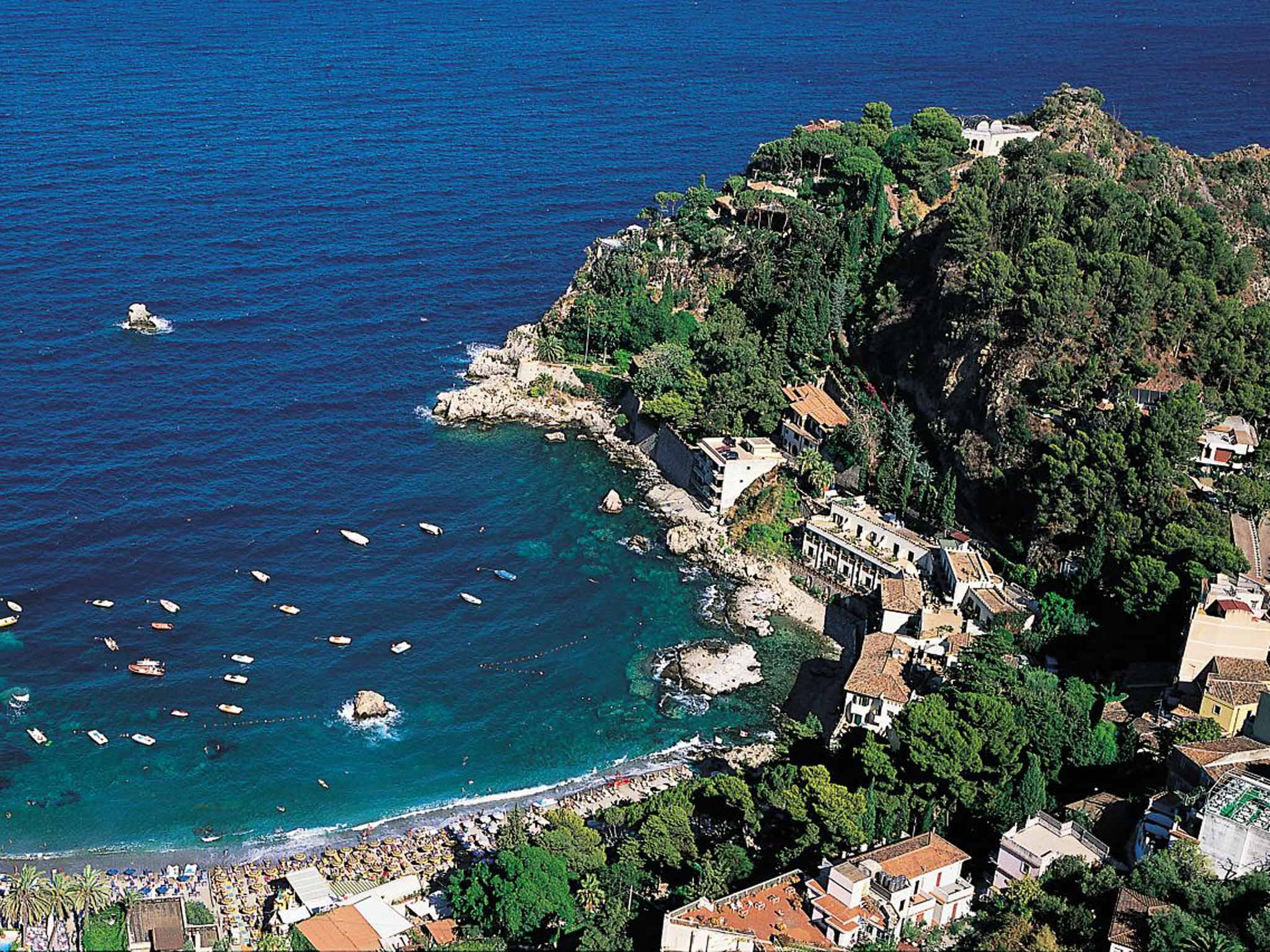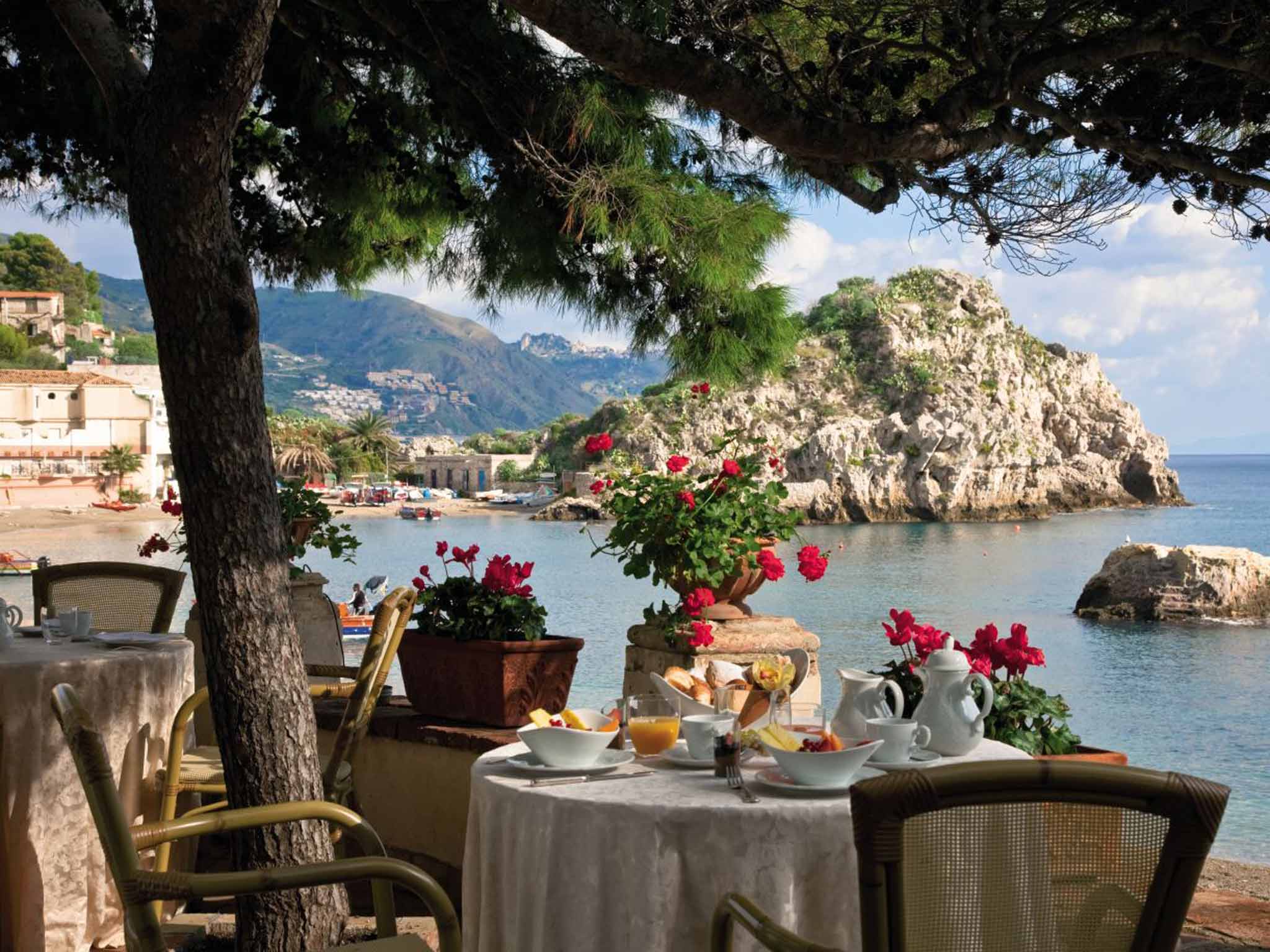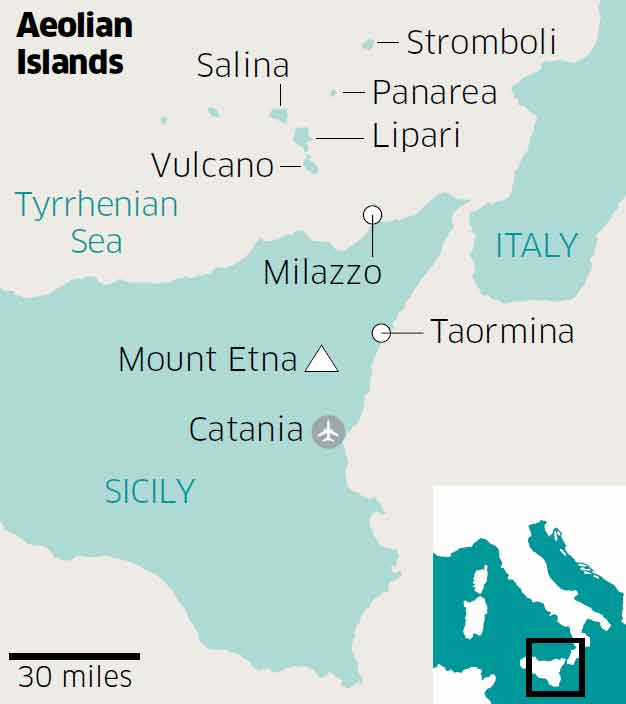Sicily and the Aeolian islands: Island-hopping in the land of fire and water
Dominated by volcanic peaks, some of them still active, Sicily and the Aeolian islands offer stunning coasts, fertile interiors and dramatic, rumbling cones

Your support helps us to tell the story
From reproductive rights to climate change to Big Tech, The Independent is on the ground when the story is developing. Whether it's investigating the financials of Elon Musk's pro-Trump PAC or producing our latest documentary, 'The A Word', which shines a light on the American women fighting for reproductive rights, we know how important it is to parse out the facts from the messaging.
At such a critical moment in US history, we need reporters on the ground. Your donation allows us to keep sending journalists to speak to both sides of the story.
The Independent is trusted by Americans across the entire political spectrum. And unlike many other quality news outlets, we choose not to lock Americans out of our reporting and analysis with paywalls. We believe quality journalism should be available to everyone, paid for by those who can afford it.
Your support makes all the difference.The mountain above me boomed. "We love the sounds of our volcano," said the smiling woman in the café. "When it goes quiet on us, that's when we worry." I gazed apprehensively up to the summit as another great rumble reverberated around the island. Yellow-tinged smoke billowed out, and what looked like birds circled overhead. They were, I realised in double-take, projectile rocks.
I had just come down the steep slopes of Sicily's volcano-island of Stromboli, having been up as far as is permitted without joining one of the large guided groups that make evening ascents to the three craters. Individuals can hike to within 400 metres of Stromboli's summit along well established, if at times challengingly vertiginous, paths. Thereafter the going gets tough, particularly as lava scree has to be negotiated, which is part of the reason why you need to go with a guide. I'd wanted to visit the volcano without crowds and in full daylight, dawdling over the views and taking in the abundant vegetation it nourishes. Adding to the delights were the magnificent sounds of Stromboli itself. Every so often it belched and the ground shuddered. It didn't take long to realise this could be timed to intervals of 20 minutes, almost exactly.
Stromboli has famously regular, low-level eruptions. They're pretty constant, said the woman at the café by the bottom of the volcano, where I stopped for lunch. There had been a fairly major eruption in 2007, yet with no very serious outcome, she said. Far more damaging was the tsunami that hit the island in 2003. Although relatively small-scale and not resulting in any loss of life, it was terrifying, added my informant, her smile much reduced. The volcano had been silent beforehand, and the island's residents live in dread of another such ominous hush.
Why 400 or so people choose to live on this far-from-dormant volcano eluded me – and what's more there's been a resident population here for centuries. Perhaps it is for the sense of drama and romance, for Stromboli has been active since at least the time of the Ancient Greeks. The island consists simply of a classic volcano cone, with two settlements on opposite sides: tiny Ginostra and little Stromboli "Citta" complete with a couple of churches and several cafés.

Stromboli is the northernmost of the seven inhabited Aeolian Islands off the north-east of Sicily. About an hour's hydrofoil ride from the port of Milazzo, the archipelago has only recently arrived on the radar of mainstream tourism, although for decades it has been a much loved holiday spot for Sicilians, who come for the old-world mood, for the stunningly clear blue waters, and for the volcanic marvels. In many ways this is the Isle of Wight of Sicily, with added seismic interest. As well as Stromboli, appositely named Vulcano is active. It is the closest of the islands to Sicily and it fizzes with hot springs and steaming mud. Meanwhile in the waters just north of upmarket (and in summer startlingly expensive) Panarea you can swim in bubbling fumaroles.
I was based on Salina, more or less in the middle of the archipelago. About half the size of Guernsey, it is the second largest of the Aeolian Islands, the least visited, and the greenest thanks to the combination of its fertile soil and its groundwater (there are, though, no streams or lakes, and as with all the Aeolian Islands water for domestic use is shipped across from Sicily). It is strikingly composed of two extinct volcanoes, its tall twin cones making an impressive counterpoint to Stromboli's single cone visibly puffing out smoke to the north-east across the Tyrrhenian Sea. Its 2,300 residents grow capers and grapes, and increasingly cater for summer visitors.
Grapes and tourism make a particularly happy blend at Capofaro, the small wine estate and hotel where I was staying. Set around a working lighthouse on the north-eastern tip of Salina, the estate produces malvasia grapes that are mostly used for dessert wine redolent of wild herbs and honey, although an aromatic dry white has also recently been developed. Capofaro is owned by the patrician Tasca d'Almerita family who have four other wine estates on Sicily and cultivate vines across some 600 hectares, the Salina property being a boutique venture. They acquired this corner of the island in 2004 and a year later started welcoming guests to the series of sleek white villas they have devised here: with cane roofs supported on wide white columns, the style neatly reflects the island's architectural traditions. Today the little estate offers 20 rooms with wide verandas and lava tiled bathrooms; a large living room for watching films, taking yoga classes and the like; a central infinity-edged swimming pool beside which you can't fail to feel glamorous; and an open-sided restaurant serving just-caught seafood and Sicilian pasta given a refined twist.
You could simply sink into the quiet here, but there's an intriguing mix of activities to enjoy. You go island-hopping by hydrofoil to Stromboli, or Lipari, Panarea, and Vulcano. You rent a boat for a spectacular cruise around Salina at sunset. You take walks up the island's verdant volcanic cones. Most visitors don't bring cars to the Aeolian Islands so you explore by public bus, taxi, or scooter, and on Salina the bus proved a charming way to get around and get a feel for local life. I took a trip south to waterside Lingua and was ushered into Da Alfredo café which is something of an institution for its pane cunzato – large bruschetta sporting great volcanoes of salad; and for its granita – a thirst-quenching, icy treat in a choice of piquant flavours from lemon to almond and coffee. Then I headed north and west to Malfa and Leni, less to look at these quiet towns than to enjoy the wonderfully lush, vine-lined route that passes dramatically between Salina's two cones.
The next morning it might have been a wrench to leave the tectonic wonderland of the Aeolian Islands but I had another volcano to see. The nearest airport to the archipelago is Catania, from where your route to and from Milazzo and the hydrofoil takes you within good viewing distance of Mount Etna. The best place to stop and take in panoramas of this almost hyperactive volcano is Sicily's charmingly classy hillside town of Taormina. And I did so, twice.
Taormina was made for tourism. Before the 18th century it was a village surrounded by lemon, almond and olive producers. Then along came German and British aristocrats on the Grand Tour wanting to see the Greek Theatre here (actually Roman but built on the site of an earlier such structure) and others followed, marvelling also at the beauty and the antics of Etna. One of Taormina's first hotels was the Timeo, which has played host to the great and the good since the 1870s – Edward VII was here; Kaiser Wilhelm too; D H Lawrence loved to sit on the terrace gazing at the view. I felt a resonance with him on my first morning as I stared out of my bedroom window at the Timeo, transfixed by the sight of Etna sending out a trail of smoke against an azure sky. It's a bountiful presence, the hotel staff said, and explained how some of the best wines and olives on the island come from the slopes of the volcano.

On my return trip to Taormina I stayed just below town at the Timeo's sister hotel, the Villa Sant'Andrea on sparkling Mazzaro Bay. The property was built by a Cornish engineer, Robert Trewhella, who in the 1880s designed the Circumetnea railway line – around Mount Etna. Before feasting on the seafood specialities that the Sant'Andrea offers today, I headed back to the Timeo. Even if you're not staying at the hotel, you should make for its terrace at sunset, order a drink and sit back to marvel at the views of Etna with the sky turning pink behind it.
Getting there
Harriet O’Brien travelled with Prestige Holidays (01425 480400; prestigeholidays.co.uk) whose five-night trip to Taormina and the Aeolian Islands costs from £1,246pp. The price includes return easyJet flights from Gatwick to Catania, private transfers in Sicily, hydrofoil crossings, and B&B accommodation at the Grand Hotel Timeo in Taormina, Capofaro Malvasia hotel on Salina island, and Villa Sant’Andrea at Taormina.
A seven-night trip, allowing more time in Taormina and that region (and with accommodation in the same hotels), costs from £1,690pp.
Join our commenting forum
Join thought-provoking conversations, follow other Independent readers and see their replies
Comments